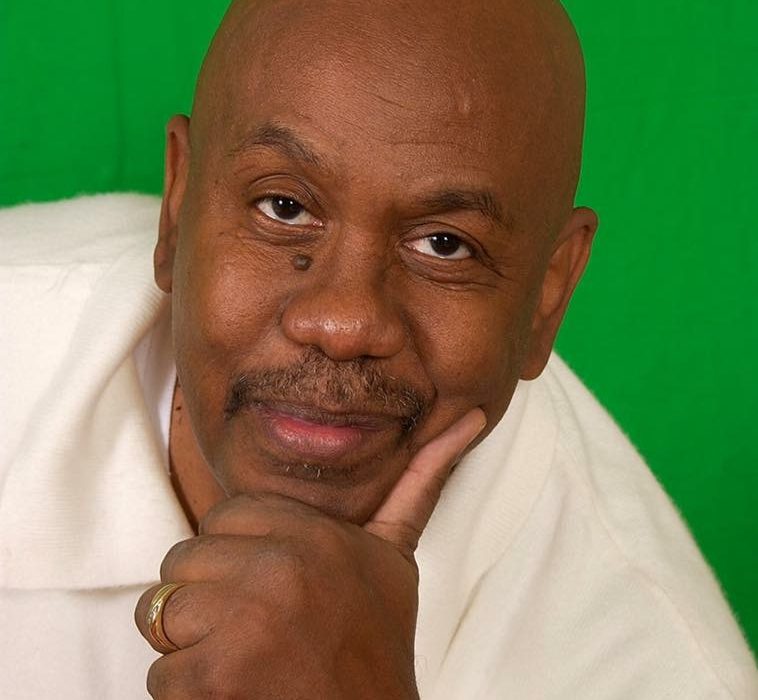After interviewing Reggie Miles, I started to look for more and see differently – Chicago-style steppin’. The wealth of information Mr. Miles shared was the start of a good book. Since our interview, I watch more than I dance when I am in Chicago and I take in a whole lot more. Thank you Tony Adway for introducing me to this Chicago icon and legend, Mr. Reggie Miles, and for making this conversation possible. I hope this moment shares an eye-opening perspective for any reader. Enjoy the interview!
Why do you call yourself a dancer and not a stepper?
That is a wonderful question. When I saw steppin’ come about I was doing a dance called the bop. I was satisfied with what I was doing. The growth and expansion of what is the present iteration of the dance are wonderful and I love to see it, but I think that it’s limited in terms of what the party is really all about. I don’t go to a dance, or a set, a party or an event just to do one thing. I don’t go to just step, step, step, step, step. When I go to an event I want to step, slow dance, walk, bop. I want to do a variety of things to fit into the atmosphere. The terminology being used is one-dimensional and I am not a one-dimensional dancer – a person that goes to bop. I can do it all – cha-cha, dance. I am a dancer and so that’s why I think steppin’, even though it has its popularity and lots of people are gravitating to it and it’s wonderful, but I think it’s one-dimensional.
You often say, “I want to hold a woman.” Is the essence of steppin’ Chicago style romance?
Absolutely. I mean, it depends on how far you want to go with the word romance. It’s not that you’re trying to go into intimacy every time you dance with a woman. That’s not plausible, but the style with which you dance with the woman. You can always dance romantically with her and you don’t have to violate her space. It can look as if people are making love on the dance floor but their bodies are not touching – no violations whatsoever. Now, there was an era before wherein the basement party people would grind and press themselves upon one another but you grow out of that. And so you don’t do that now. My idea of holding a woman was unique to the style in which I danced. While cats are flippin’ and doing all this other stuff I am trying to get my arms around a woman. That’s Reggie Miles’ style.
Do you think this dance would be as widespread and taught outside of Chicago if the count had not been introduced?
That’s a catch twenty-two question. In order for the instructor to make the curriculum with the dance, he needed that count. The count is strictly for instruction. The only thing that’s lacking… when the instructors introduce the count they only introduce their style of the dance. They are not giving the dance in its totality. I don’t know if that is Chicago style, that might just be the instructor’s style. And maybe that instructor is from Chicago, but maybe that helped him or to make money better. I am a purist from the watch and learn generation. I am not knocking anybody that’s counting – that’s cool. Still, I am looking to get that feeling from a woman in my hands and see if she can hear the music. I would rather modify my dance to the lyric and orchestration of the music as opposed to me counting 5,6,7,8, 1,2,3… Instead of that going on in my head, if I hear some horns I am going to kick up my legs to the beat of that horn or if I hear some strings I want to slide my foot slowly. That’s how I want to feel a song. I want to dance to the music instead of a count. The vibe between two people on the dance floor should create different art. I don’t know how much art you create if you’re caught in this count.
Why shouldn’t we use the word “evolution” in the context of steppin’ Chicago style?
First of all, the way the term evolution is being used now is like putting the dance in a ladder hierarchy with the newest iteration of the dance at the top and everything below it on that ladder means nothing. I look at it as being a tree. A tree just grows and it grows in the ground and then it comes up with the roots of the tree being most important. If I ask anyone that calls themselves a stepper now, “what the roots of this dance are” they cannot tell me what the roots of this dance are. They can’t tell you because they don’t know. Some say Tyk Mann is the root, Anthony Dow is the root, Andre Blackwell is the root. They are not the roots. They are just another twig on the tree. The biggest misnomer that the evolution was tied to is R. Kelly’s “Steppin’ in the Name of Love.”

Ain’t no way our dance evolved into that mess. That is for people that can’t count that have no rhythm or something that you just have to keep up with the beat. That song is a straight beat. That is not our dance – not Chicago’s dance. That song is not it, but it was great because it expanded what the dance is all about. Some people use the word evolution for their own personal means. Some instructors tell you “Yea, this dance is going to evolve, the dance is evolving.” Explain how is evolution subtraction? If anything is evolving you add to it. How does the dance or parties go from three-dimensional in the beginning where we slow danced, fast danced and medium danced all at a set to evolve to one style of music and one style of dance? You’re telling me that’s evolution? That type of evolution I don’t want to be a part of. Evolution should add to, not take away from.
How should we express how the dance changes over time to help instructors teach and students to learn the proper history and essence?
The culture and history of the dance are going to have to be revealed by people outside of the instructors because the instructors don’t know the history themselves. All the instructors know is that they won a dance contest. Once you win that dance contest that’s your key card, but there are some people who have never gotten into a dance contest that could challenge some of the people that are in contests dancing now.
How do we express a change in this dance?
The dance is going to change whether or not we want it to because we have younger people coming into the dance. The music has control of that. For example, when social partner dancing for black people started on the east coast side with the lindy hop. The lindy hop was predicated on big band music. Big bands died and so did the dance. Then with the next iteration, the bop, Philly started doing the bop and DC started doing the hand dance. The bop was more jazzy type music because big bands sound went straight into jazz and a lot of organ jazz sounds and then that dance came out. The lindy hop was more acrobatic – flipping and turning. There were still doing all that flipping and turning, and Dancing With the Stars stuff in DC and Philly, and then Motown came out.
Then the bop turned into something else. Detroit created the ballroom style and Chicago created its own bop. The style of Chicago bop was about being smooth and cool. People flipping and acrobatics were gone. Nobody cared about that stuff. If your footwork was going to be fancy you stayed in front of your partner and you didn’t violate any lanes. It was smooth and cool. Then, of course, the walk was added to it and the slow bop. On those hard jazz cuts, an experienced bopper/dancer will go into a slow bop. The key to being a dancer – if you are a stepper or bopper you should be able to step, slow dance, slow bop, and go into all three of those in any song that you wish. You should be able to change the tempo in the dance at will and I don’t see instructors teaching that art.
Does today’s music still allow for a dancer to dance to three tempos in a single song?
Absolutely. That song “Long As I Live” by Toni Braxton – you can get into a step 150 miles an hour. Young steppers can do the spinning, flipping, and turning and do your thing. A Chicago walker can do a long stride walk off that – Don Vic, myself, William Perkins. The only problem now is steppers peacocking on the outside lane on the dance floor. Steppers don’t allow dancers to form the circle. Brothers show off. That’s not anything new. The only brother alive doing the new iteration of steppin’ that holds the tradition of the boppers is Claudel Jackson. He is one of the greatest to do it and he is the innovator of high stepping. If dancers pack the floor, Claudel knows to compact his dance. If he has to go into 3 feet wide and 3 feet long that’s where he’s going to stay, and to make a turn he will not go outside of his 3 feet. You don’t need radar dancing next to him. He and Raymond Smith brought in a new iteration of the dance but he is rooted and grounded in the early iterations of the dance. He stays in front of his partner. Claudel is ”the seen unseen legend.” Every new style stepper should have a course with him.
What do you see as the biggest hurdles for progress in the stepping community?
The music. The way that the DJs are playing the music.
How do you define what progress should be?
For progress, in my opinion, knowing the history and why this dance came about has to be revealed. The people have to understand that. When you come to a steppers’ set you are not coming to complain about the music. Most steppers today are dancing to anything anyway. You come in there to get your gamesmanship on. You are coming to a set to be clean – show off your threads, be sociable, if you are a drinker to drink, choose, or get chosen. That happens at every set except for the clean thing with this new generation. They come in boots and blue jeans. That kind of stuff was unheard of in the early iterations of the dance. This dance steppin’ or God’s social partner style was created in direct opposition to disco. We didn’t want one style of music, nor one style of dance, nor did we want to dance in a way where we were just not connected to another individual. What’s being lost now is that the guys playing the music come from this fast music era where they try to beat match.
That stuff is exciting but you’re forgetting about the slow music, the walk music, the gamesmanship in the set. Guys trying to get into a relationship mode don’t want to be boogieing and steppin’ with her all the time. Play something so at least I can smell her perfume. The romance in the set is being diluted by this perverted style of music that’s being played. If you want to go to a house set, go to a house set, but don’t come to a steppers set expecting it to be House. It’s a different kind of gamesmanship. At a steppers set, a man treats a woman with the ultimate class. She is supposed to be. It’s the ultimate form of respect. Every sister that you’re dancing with is supposed to be a queen. Music is about love and relationships anywhere you go. Think about songs – Love Is a Battlefield, Boo’d Up, Best Friend. There is nothing better than to be with a sister at a time when she hears a song that makes her emotional and when we dance I can feel the emotion in her hands.
Is there a legend in the community that could show us the light to move forward to move on?
As a DJ I saw a lot of people but I didn’t know of them. Calvin Barnes, my mentor the person I give respect to. Claudel Jackson, especially. Stanley Brown, William Perkins, Dimples, I went to school with Dimples. Michael Davney tries to stay relevant. I still understand what he’s doing although he is getting older.
Words to Remember from Reggie Miles
This dance is three-dimensional and cannot be just up-tempo music. Dancers cannot and never intended our dance to be that way. Chicago-style steppin’ is not disco, it’s not house. When you come into a set or when you come into this culture, learn to appreciate all the music. It is not just about the up-to-date music, it’s the dance music. DJs use a young audience as an excuse not to display their musicology. Come on, play different songs and find out if the crowd will dance. Keep playing and make them dance to other songs. The music has gotten so limited. There is more good music behind you than there is in front of you. Deal with people’s memories. Get that gamesmanship back, the romance. Out-of-towners, learn to walk, slow drag, whatever you call it so if someone from Chicago comes to your city to your set they don’t have to listen to step step step all night long. Play some slow records. Our sets are the only ones that are dynamic. If you are just learning this dance take the onus on yourself to go out and learn the rest. Once you have the basics from your instructor, go out, see and learn.
This is an advertisement.
Want to hear more from Reggie Miles? Here is his interview segment on DJ Special K’s the Lower Level – July 1, 2019.




Reginald D. Miles
Thank you “Ladies” for your comments. Be encouraged, continue your journey and hopefully I will meet you and dance with you. Gloria, you comment is not uncommon another woman stated she felt like she was in a “fight” dancing with one of the brothers. Look at his style before you say yes! The dance is actually in the HANDS. Be Blessed and keep dancing.
Reginald D. Miles
Thank you “Ladies” for your comments. Be encouraged, continue your journey and hopefully I meet with you and dance with you. Gloria, you comment is not uncommon another woman stated she felt like she was in a “fight” dancing with one of the brothers. Look at his style before you say yes! The dance is actually in the HANDS. Be Blessed and keep dancing.
Sonji
You are welcome.
Sonji
I love your stepper name. Thank you for commenting.
Shelly Ellzey
Reggie Miles knows what he’s talking about, me and him came from those days my name is Shelly Ellzey and on da wood i’m Smooth Steppin Shell.
Gloria Johnson
Thank you for this information. I would consider myself a dancer and go back to those house parties, Bob and hand dance you spoke of. I am the type of dance that loves a smooth execution without the fluff. I am light on my feet and love this dance called Steppin. I have now been in this steppin world for about 5 years and it never cease to amaze me. I do however have a problem with some of the male dancers. They are at times really rough, I mean pulling or jerking your arm into different moves that they are trying to lead you into to. This breaks into my dance because it is very distracting and I don’t really care to be pull or jerked into a dance move. I make the best of it but someone needs to bring this point to the men that they really don’t have to be so rough in order to get a lady to follow their lead. Help !!! Again thank you very informative
Rena Craft
This is an Awesome read Great information, I Love it! Thank You Mr Miles 🖤
Belinda McGuire
This is just what I love. I learned the basics, now I dance to the music itself. I feel the music and the emotions behind it. It irritates me when I dance with someone who execute moves that just don’t fit the song. As a matter of fact, I’ll hold out and act like I didn’t get the signal . I like to Step, I like to Walk. I haven’t fully learned to Bop yet or Hand dance but I’m sure those dances would allow me more variety. I never like doing the same steps over and over. That gets boring. Thanks for this interview. I will be passing this on. Thanks William Perkins for sharing with me.